Integrated Solutions for Education
A education is undergoing a silent revolution. With the advancement of technology, educational institutions have the opportunity to transform themselves into connected, secure and highly efficient ecosystems. But how does this work in practice? Imagine an environment where security, learning and management go hand in hand, driven by integrated technological solutions that optimize processes and make teaching more accessible and dynamic. In this article, we will explore how these innovations can positively impact schools and universities, from the classroom to the administration, creating an educational model aligned with the demands of the 21st century.
The Role of Technology in Education
Technology is not just an additional tool in the education sector; it is the foundation for more efficient and inclusive teaching. With integrated solutions, it is possible to optimize administrative processes, improve the student experience and ensure safe environments. Among the main benefits are:
- Greater administrative efficiency: Reduces time spent on manual tasks.
- Improved student experience: Interactive tools make learning more engaging.
- Enhanced security: Continuous monitoring protects everyone involved.
These innovations allow teachers to focus on what really matters: teaching.
Advanced School Security
Security is one of the pillars of integrated solutions. After all, a safe environment is essential for students and teachers to be able to focus on learning.
Intelligent Access Monitoring
Smart cameras play a crucial role in automatically identifying authorized individuals and monitoring sensitive areas on campus. These technologies not only capture images but also analyze suspicious behavior in real time.
Automatic Alarms and Notifications
Integrated systems send instant alerts in emergency situations, such as fires or break-ins. This ensures a quick and coordinated response, minimizing risks. With these tools, security stops being reactive and becomes proactive.
Smart Classrooms
Traditional classrooms are being transformed into dynamic and interactive spaces thanks to technology.
Interactive Panels and Recordings
Digital dashboards allow teachers to use visual aids to engage students. In addition, automated systems record classes, allowing content to be reviewed or shared with remote classes.
Connection Between Classrooms
Technological integration connects different classrooms or even institutions. This promotes a richer and more collaborative exchange of knowledge between students and teachers. These innovations make learning more accessible and inclusive for everyone.
Automated Frequency Control
Manage the student attendance can be a challenge for many institutions. However, with automated solutions, this process becomes simple and efficient.
Terminals of Access control
Smart devices automatically record student attendance as they enter campus or classrooms. This eliminates the need for manual attendance and reduces human error.
Real-Time Reporting
The collected data is processed instantly, generating detailed reports on student attendance. Teachers and administrators can easily access this information to make quick decisions. This automation not only saves time but also improves transparency in school management.
Distance and Hybrid Learning
With the growth of remote learning in recent years, integrated technologies have become indispensable to ensure a quality educational experience.
AI Platforms for Remote Education
AI-powered solutions personalize learning by identifying each student’s specific needs. This creates a richer experience tailored to their individual learning pace.
Collaborative Distance Learning
Advanced tools allow multiple classrooms or institutions to collaborate simultaneously. This is especially useful in hybrid learning models, where some students are in-person while others participate remotely. These technologies ensure that no one is left behind in the educational process.
Benefits of Integrated Solutions for Education
The benefits of these solutions go far beyond operational efficiency. They create a more connected and secure educational ecosystem. Key benefits include:
- Enhanced security: Continuous monitoring reduces risks.
- Administrative optimization: Automated processes save time.
- Enriched experience: Interactive tools make learning more engaging.
- Full integration: All systems work together in harmony.
These innovations prepare institutions for the challenges of the future while solving problems of the present.
Conclusion
Technological integration in the education sector is not just a trend; it is a necessity to keep up with the demands of the modern world. From security to remote learning, integrated solutions transform schools into connected and efficient environments. If you want to implement these innovations in your educational institution, learn about the solutions offered by C2H Solutions! Contact us through the official website page and request a personalized quote right now!
Frequently Asked Questions (FAQs)
- How do these solutions improve school safety?
Smart cameras monitor access and send automatic alerts in suspicious situations, ensuring a safe environment. - Is it possible to integrate these technologies into existing systems?
Yes! The solutions are designed to be compatible with pre-existing school platforms. - How does automated frequency control work?
Terminals automatically record student attendance as they enter the campus or classroom. Data is processed in real time for accurate reporting. - Do the tools support remote teaching?
Yes! There is full support for distance learning with advanced interactive features based on artificial intelligence. - What are the main benefits of these technologies?
Enhanced campus security, improved administrative efficiency, and a more dynamic educational experience are the highlights!



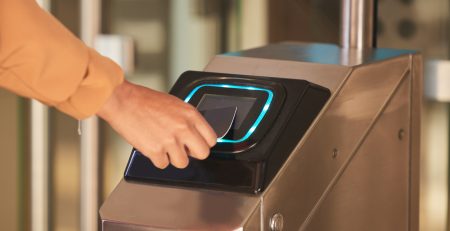
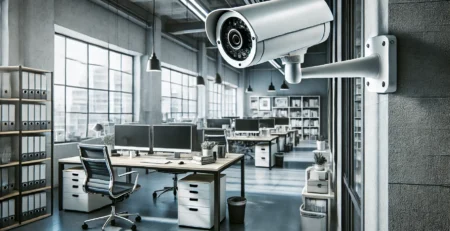

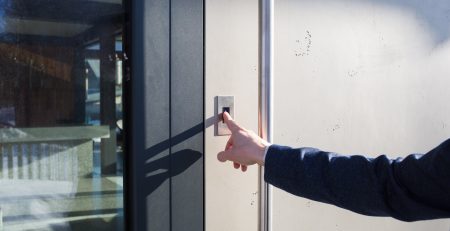

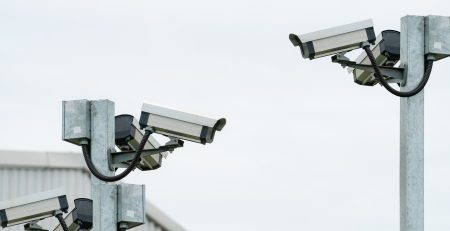


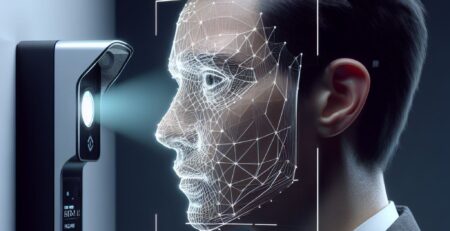
Comments (12)
💡 A educação integrada com tecnologia é o caminho para garantir um ambiente seguro e eficiente! Com soluções de CFTV e controle de acesso, potencializamos o aprendizado e a proteção das instituições. 👉 Quer aprofundar seus conhecimentos sobre #Controle de Acesso #Soluções Integradas de CFTV? Explore mais conteúdos exclusivos em nosso blog na seção #Controle de Acesso #Soluções Integradas de CFTV. 🤝 Envie um email para nosso departamento comercial! comercial@c2hsolutions.com.br
💡 A educação segura requer tecnologias inovadoras que garantam proteção e eficiência. Integrar soluções de CFTV e controle de acesso pode transformar ambientes educativos em espaços mais seguros!
👉 Quer aprofundar seus conhecimentos sobre #Controle de Acesso #Soluções Integradas de CFTV? Explore mais conteúdos exclusivos em nosso blog na seção #Controle de Acesso #Soluções Integradas de CFTV.
🤝 Envie um email para nosso departamento comercial! comercial@c2hsolutions.com.br
💡 A educação segura é fundamental para o desenvolvimento das futuras gerações! Com soluções integradas, conseguimos garantir um ambiente protegido e propício ao aprendizado.
👉 Quer aprofundar seus conhecimentos sobre #Controle de Acesso #Soluções Integradas de CFTV? Explore mais conteúdos exclusivos em nosso blog na seção #Controle de Acesso #Soluções Integradas de CFTV.
🤝 Envie um email para nosso departamento comercial! comercial@c2hsolutions.com.br
💡 A educação moderna se beneficia enormemente de soluções integradas que garantem segurança e eficiência. Investir em #Controle de Acesso e #Soluções Integradas de CFTV é essencial para criar um ambiente de aprendizado seguro e inovador!
👉 Quer aprofundar seus conhecimentos? Explore mais conteúdos exclusivos em nosso blog na seção #Controle de Acesso #Soluções Integradas de CFTV.
🤝 Envie um email para nosso departamento comercial! comercial@c2hsolutions.com.br
💡 A educação segura é fundamental para o desenvolvimento saudável das instituições. Soluções integradas ajudam a criar ambientes confiáveis para alunos e educadores!
👉 Quer aprofundar seus conhecimentos sobre #Controle de Acesso e #Soluções Integradas de CFTV? Explore mais conteúdos exclusivos em nosso blog!
🤝 Envie um email para nosso departamento comercial: comercial@c2hsolutions.com.br.
💡 A integração de soluções educacionais com tecnologias de segurança é essencial para promover um ambiente de aprendizado seguro e inovador. Proteger nossas instituições de ensino é investir no futuro!
👉 Quer aprofundar seus conhecimentos sobre #Controle de Acesso #Soluções Integradas de CFTV? Explore mais conteúdos exclusivos em nosso blog na seção #Controle de Acesso #Soluções Integradas de CFTV.
🤝 Envie um email para nosso departamento comercial! comercial@c2hsolutions.com.br
💡 A integração de soluções educacionais com sistemas de controle de acesso e CFTV não só protege, mas também transforma a experiência de aprendizagem, oferecendo um ambiente mais seguro e inovador! 🌟
👉 Quer aprofundar seus conhecimentos sobre #Controle de Acesso #Soluções Integradas de CFTV? Explore mais conteúdos exclusivos em nosso blog na seção #Controle de Acesso #Soluções Integradas de CFTV.
🤝 Envie um email para nosso departamento comercial! comercial@c2hsolutions.com.br
💡 A educação é a chave para um futuro seguro, e soluções integradas podem transformar nosso ambiente escolar. Invista em tecnologia que protege e ensina!
👉 Quer aprofundar seus conhecimentos sobre #Controle de Acesso #Soluções Integradas de CFTV? Explore mais conteúdos exclusivos em nosso blog na seção #Controle de Acesso #Soluções Integradas de CFTV.
🤝 Envie um email para nosso departamento comercial! comercial@c2hsolutions.com.br
💡 A educação segura é fundamental para o desenvolvimento e o aprendizado efetivo. Investir em soluções integradas de CFTV e controle de acesso garante um ambiente propício para o crescimento dos alunos e a tranquilidade dos educadores.
👉 Quer aprofundar seus conhecimentos sobre #Controle de Acesso #Soluções Integradas de CFTV? Explore mais conteúdos exclusivos em nosso blog na seção #Controle de Acesso #Soluções Integradas de CFTV.
🤝 Envie um email para nosso departamento comercial! comercial@c2hsolutions.com.br
💡 A educação se fortalece com soluções integradas, promovendo um ambiente seguro e inteligente para aprendizado. Invista na tecnologia que transforma espaços educacionais! 🌟
👉 Quer aprofundar seus conhecimentos sobre #Controle de Acesso #Soluções Integradas de CFTV? Explore mais conteúdos exclusivos em nosso blog na seção #Controle de Acesso #Soluções Integradas de CFTV.
🤝 Envie um email para nosso departamento comercial! comercial@c2hsolutions.com.br
#Controle de Acesso #Soluções Integradas de CFTVSoluções Integradas para Educação#Controle de Acesso #Soluções Integradas de CFTVSegurança com Inovação e Confiabilidade – C2H Solutions
#Controle de Acesso #Soluções Integradas de CFTVSoluções Integradas para Educação#Controle de Acesso #Soluções Integradas de CFTVSegurança com Inovação e Confiabilidade – C2H Solutions